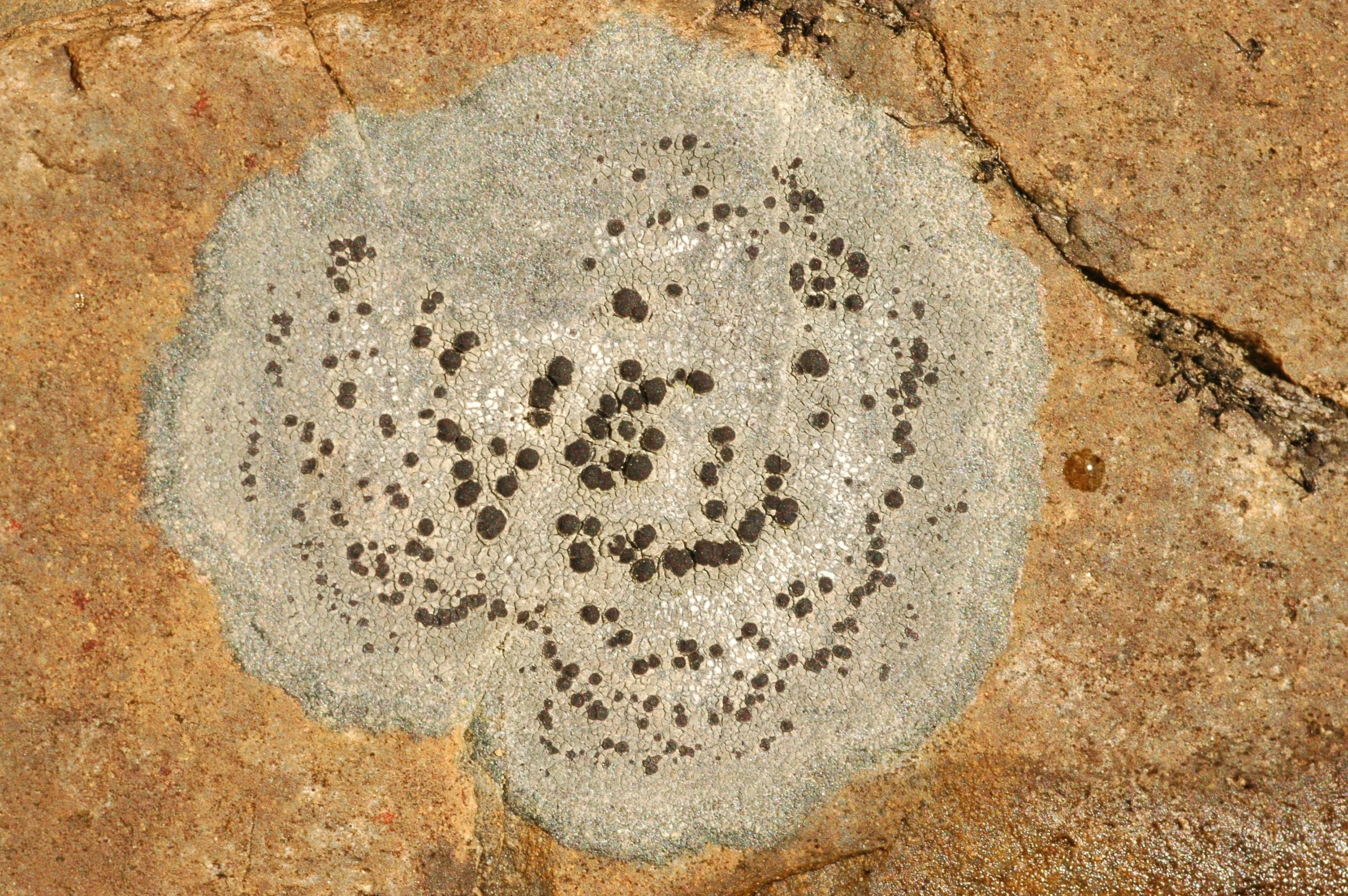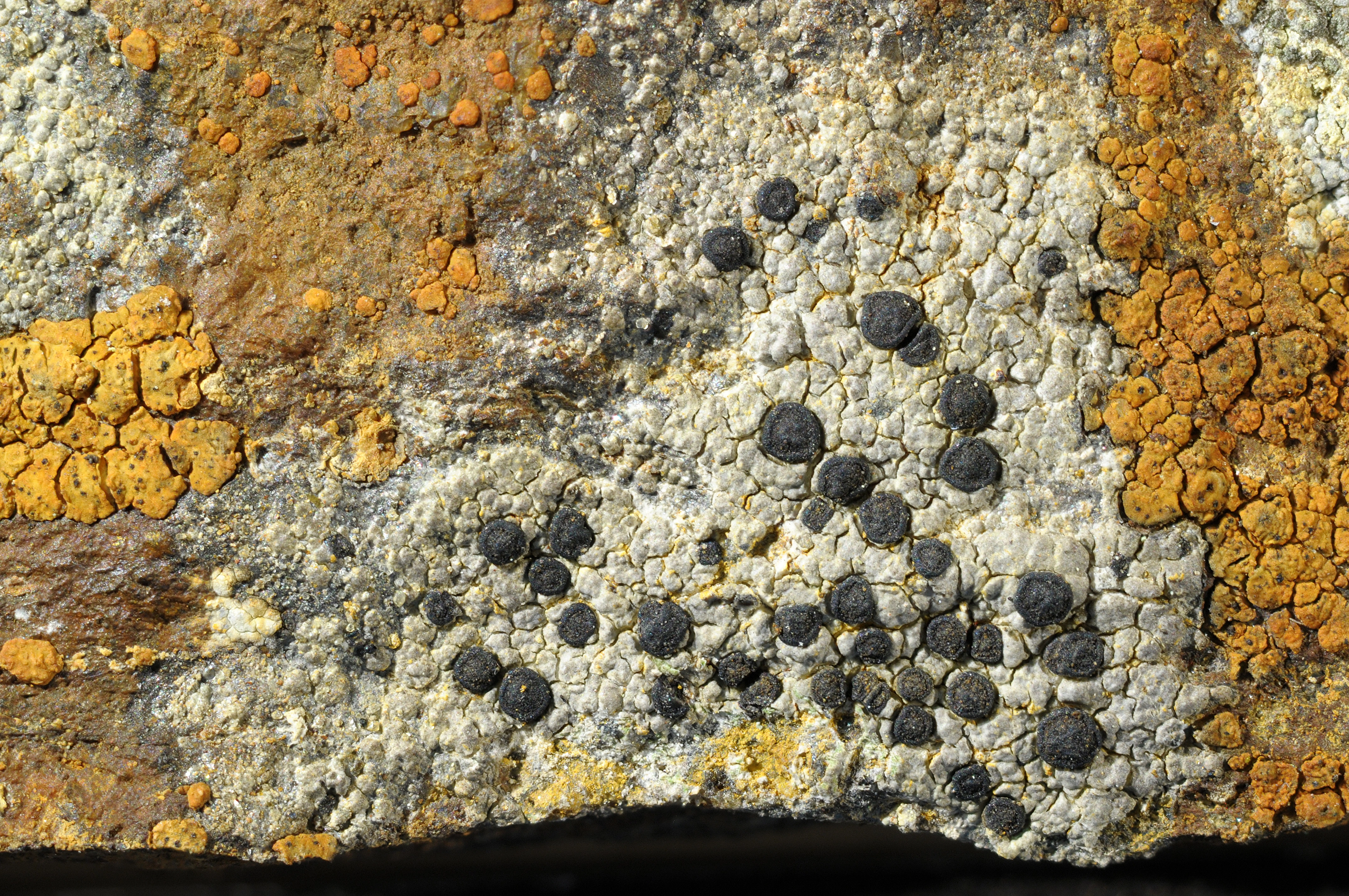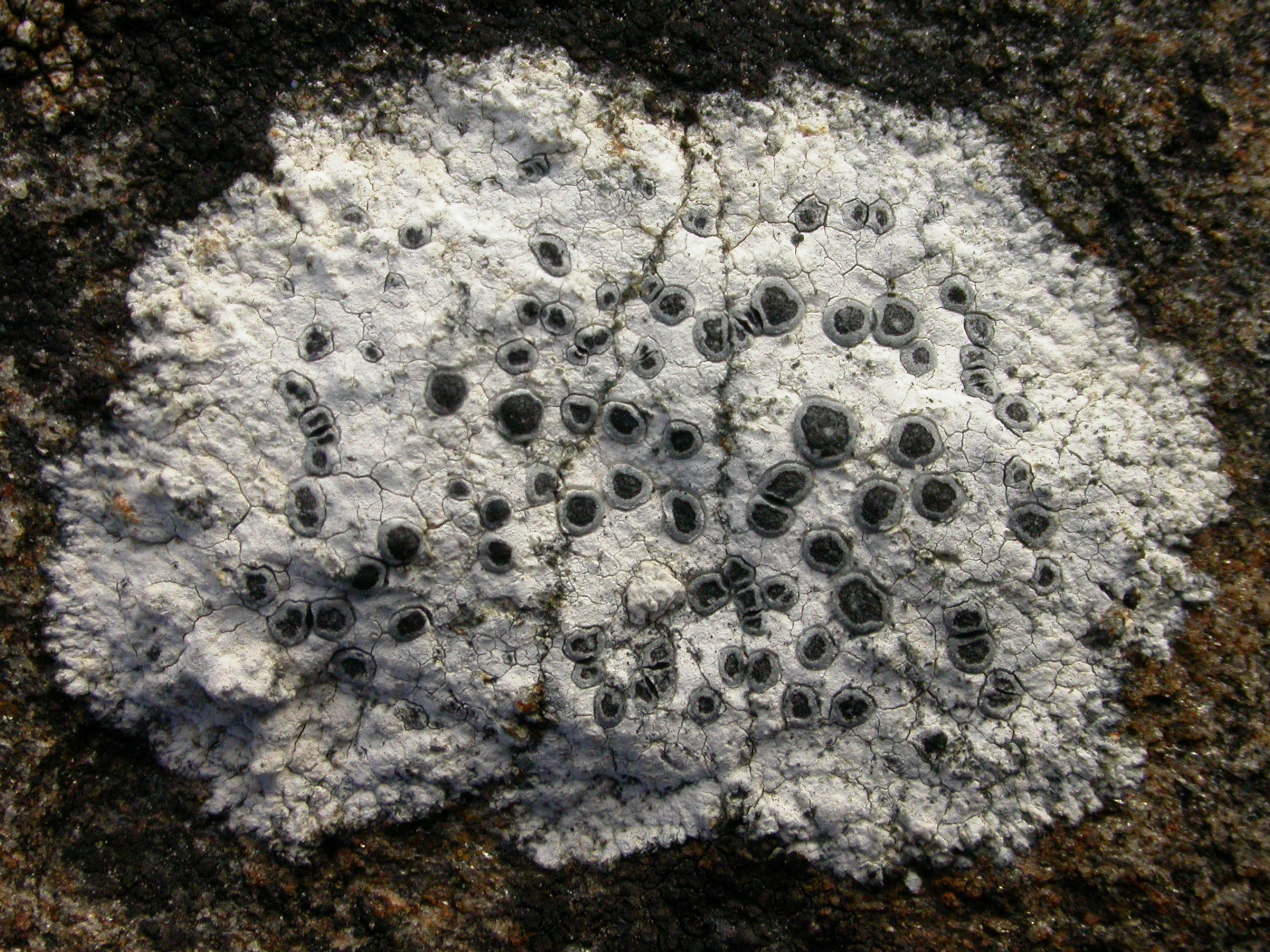Rhizocarpon petraeum
- Innhold
- Morphology
- Chemistry
- Habitat
- Comment
- Look-alikes
Morphology
Thallus rimose to continuous, more rarely partly areolate, up to 10 cm diam.; hypothallus poorly developed, black; areolae up to 0.5 mm diam., whitish grey to medium grey, dull, contiguous, mainly angular, plane; medulla KI–. – Apothecia up to 1 mm diam., black, with a faintly to distinctly pruinose margin and an epruinose disc, mainly orbicular, persistently plane and distinctly marginate, often in more or less concentric circles; excipulum brownish or greenish black in the rim, inner part pale brown to colourless, containing crystals partly dissolving in K, K+ yellow; hypothecium dark brown, K–; hymenium colourless; epihymenium olivaceous brown, containing crystals dissolving in K, K– (crystals K+ yellow); ascospores 8 per ascus, eumuriform, persistently colourless, 20–50 × 13–24 µm. – Conidiomata not seen.
Chemistry
Stictic acid; spot tests: medulla PD+ orange, K+ yellow, C–.
Habitat
On siliceous or calciferous rock, mainly in the lowlands; often near streams or periodically moist rock faces. Common.
Comment
The more or less concentric placement of the apothecia, the eumuriform, colourless ascospores, and the presence of stictic acid is diagnostic. Rhizocarpon reductum has irregularly scattered apothecia, usually a darker, more brownish thallus, and contains no lichen subsatnces. Rhizocarpon umbilicatum also has irregularly scattered apothecia, a chalky white thallus, and smaller ascospores.


